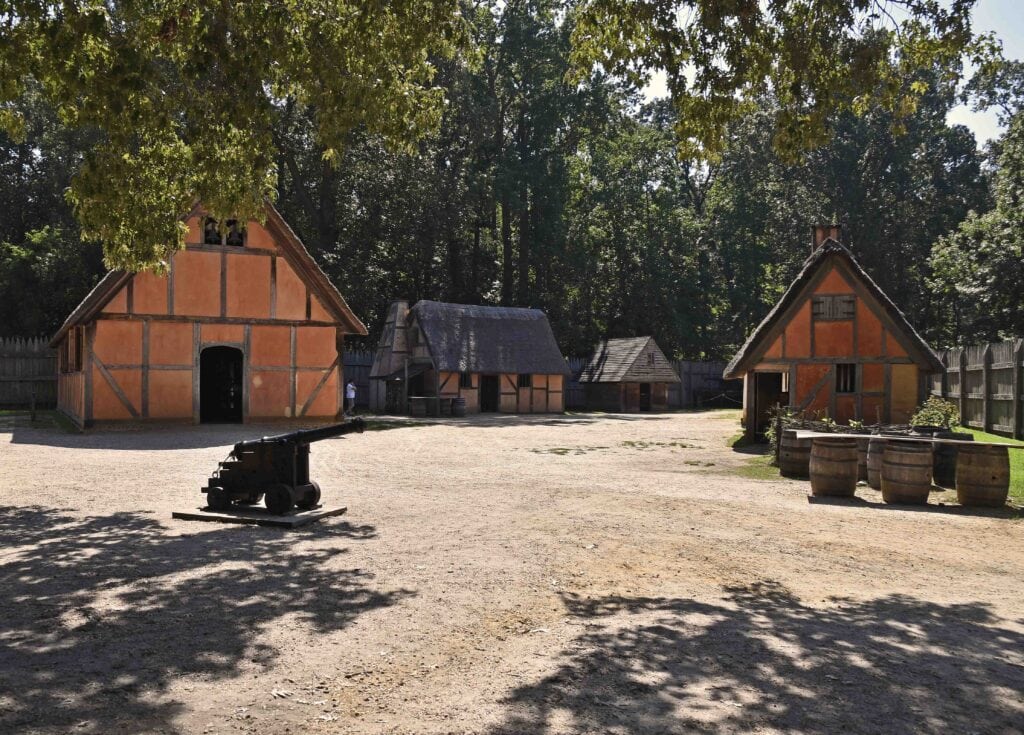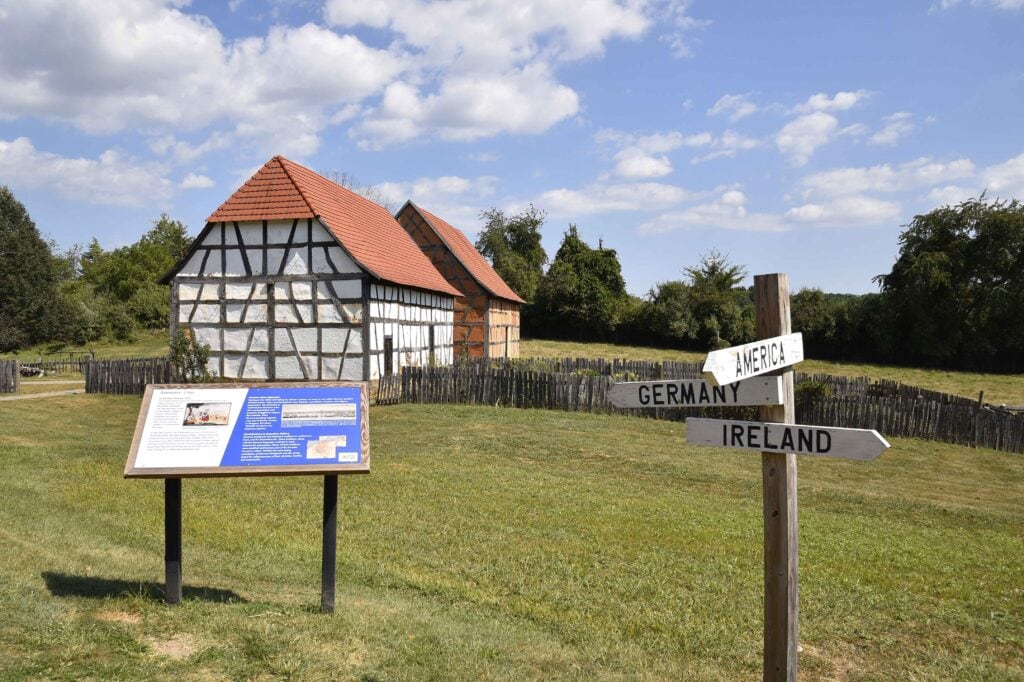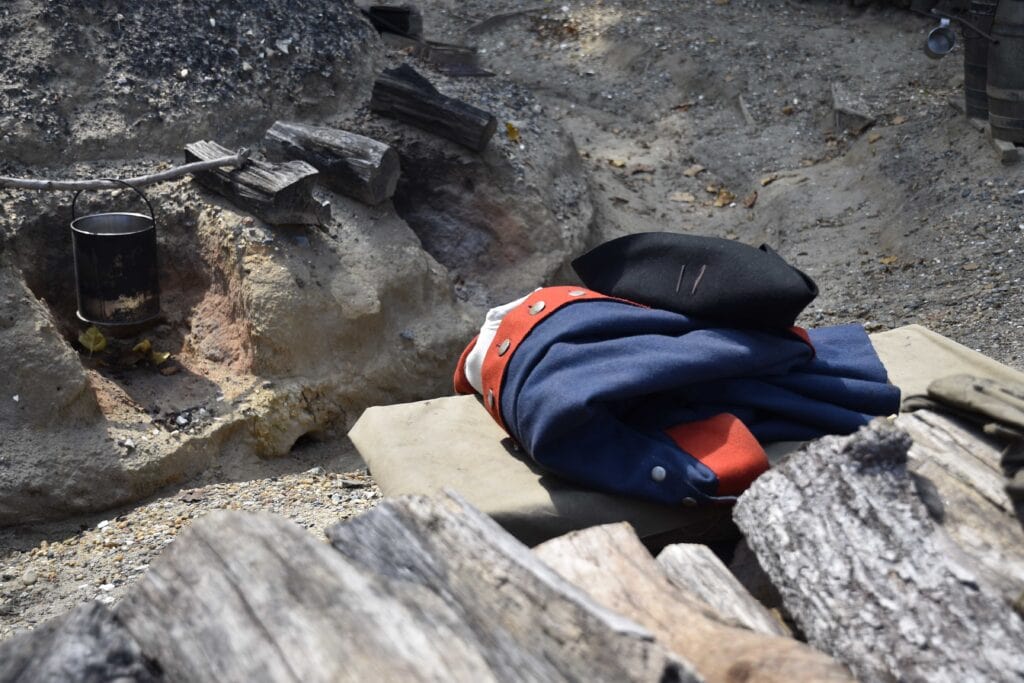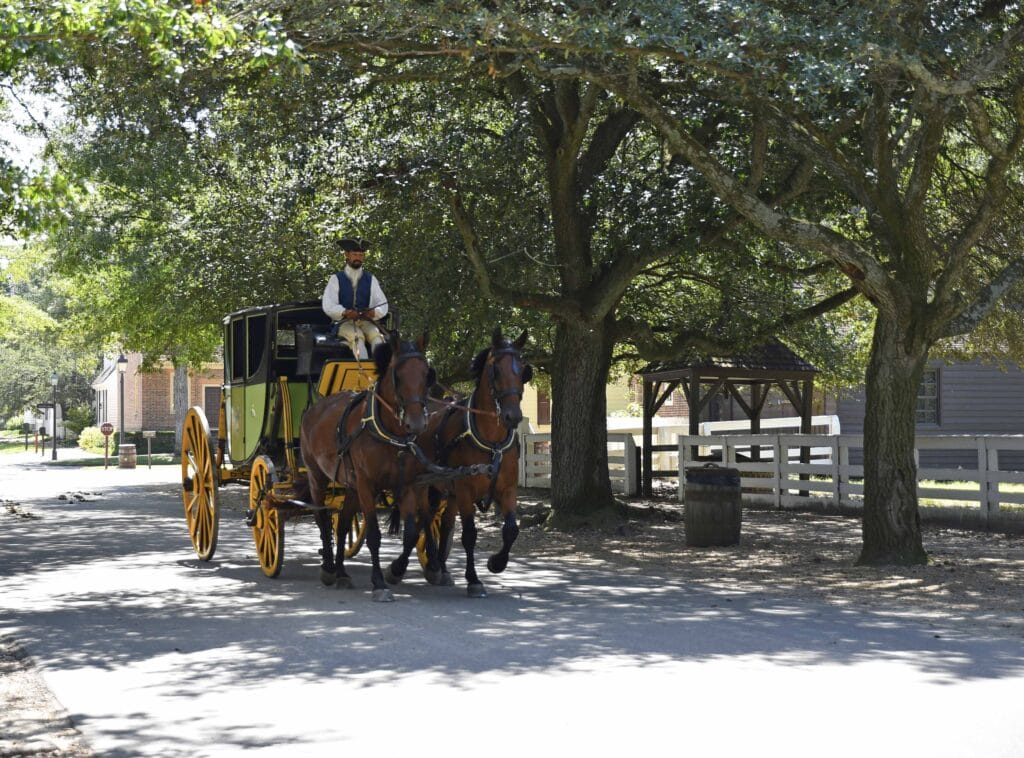In late April, of 1607, three ships appeared on the horizon of what would become the Virginia coast. Onboard are 105 passengers who are determined to create the first permanent English settlement in America. Their five-month trip was just the beginning of the challenges these early settlers would face. We journeyed to Jamestown Settlement, along the James River, to discover the events that would set the winds of change in motion.
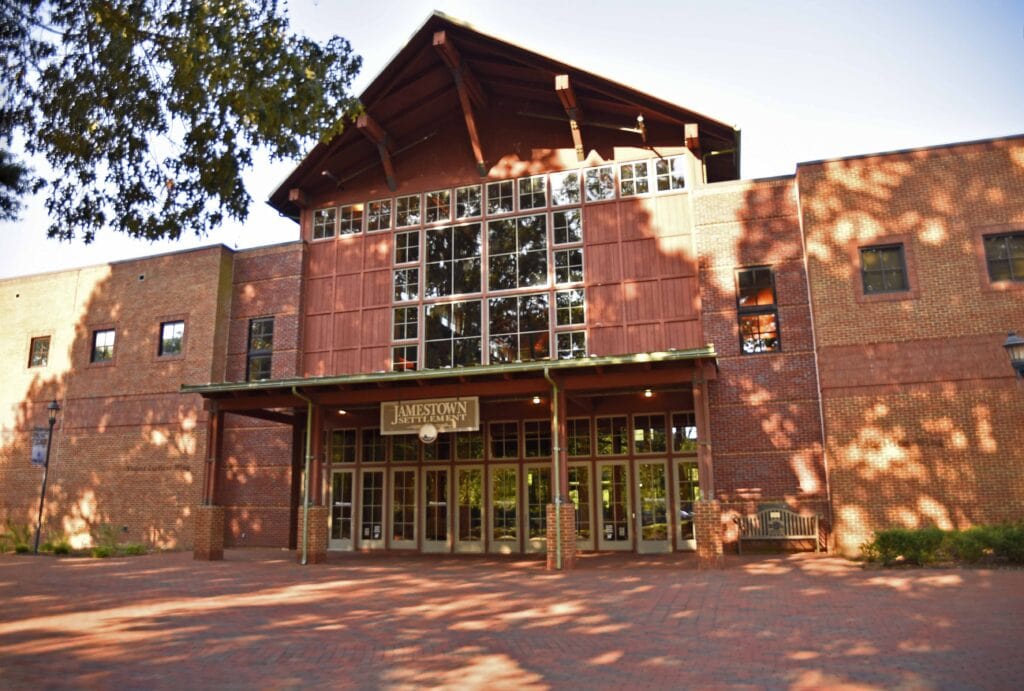
Starting in the Museum
Jamestown Settlement is made up of a museum and three living history sites. In our part of the country, the first forts didn’t spring up until closer to the War of 1812. Here we were finding ourselves stepping into lands that saw English settlers nearly 200 years earlier. This wasn’t the first attempt, by the English, to establish a foothold in the New World. One of the most notable failures is the Lost Colony of Roanoke, in today’s North Carolina. Jamestown would not only succeed but would serve as the colonial capital until 1699.
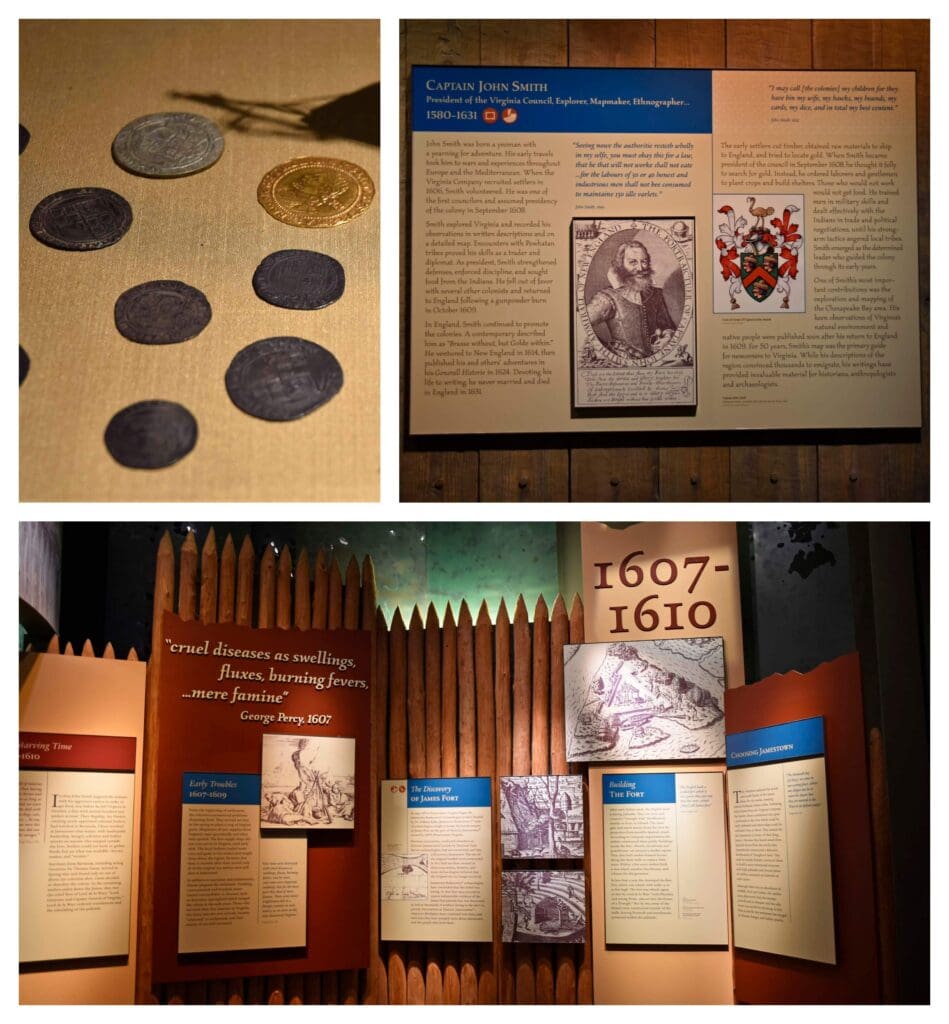
Background Information
As we toured the museum, we noted the familiar names of Captain John Smith, Powhatan, and Pocahontas. The exhibits include an assortment of documents, early furnishings, tools, weapons, and even toys. Short films and dioramas help tell the story of Jamestown Settlement. As the new settlers wore out their welcome with the native tribes, conflicts arose. One exhibit details the attempt by Powhatan warriors to regain their lands. This led to a nearly decade-long war upon the Powhatan Nation.
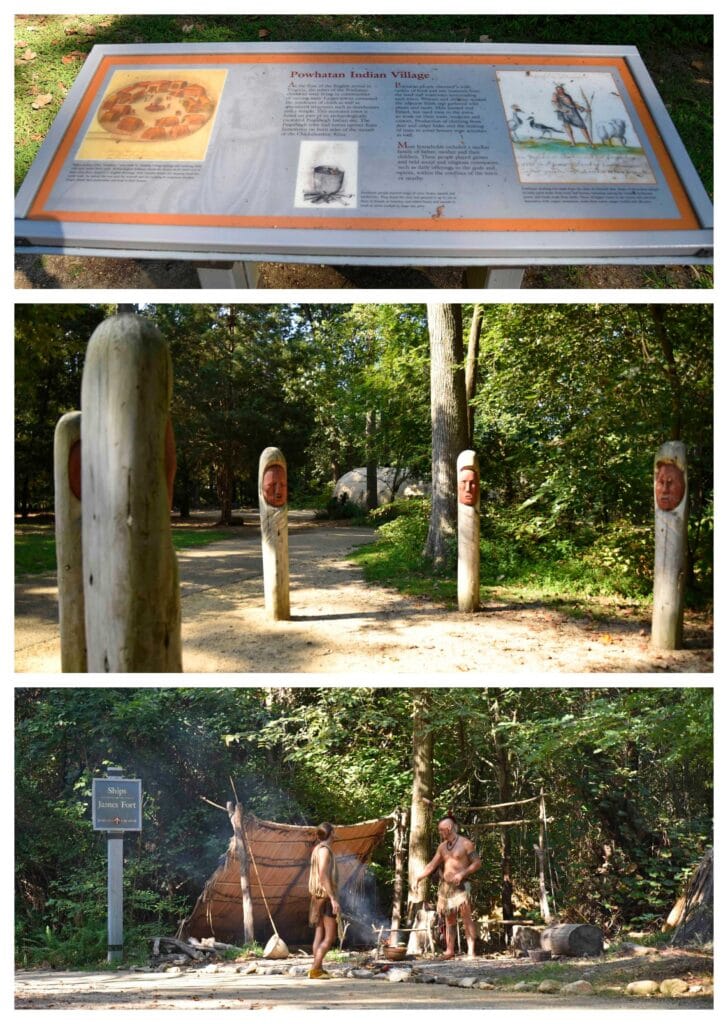
The First People
With our heads swimming in new information, we decided it was time to head out to the living history exhibits. As we made our way along the path, our first stop was Paspahegh Town. This was one of more than 30 Algonquin tribes. Costumed interpreters detailed daily life in the village. Living in the wooded lands near the James River required a variety of life skills. Visitors can learn about the pottery and weaving that was created by the tribe. We also watched a demonstration of how dugout canoes were made.
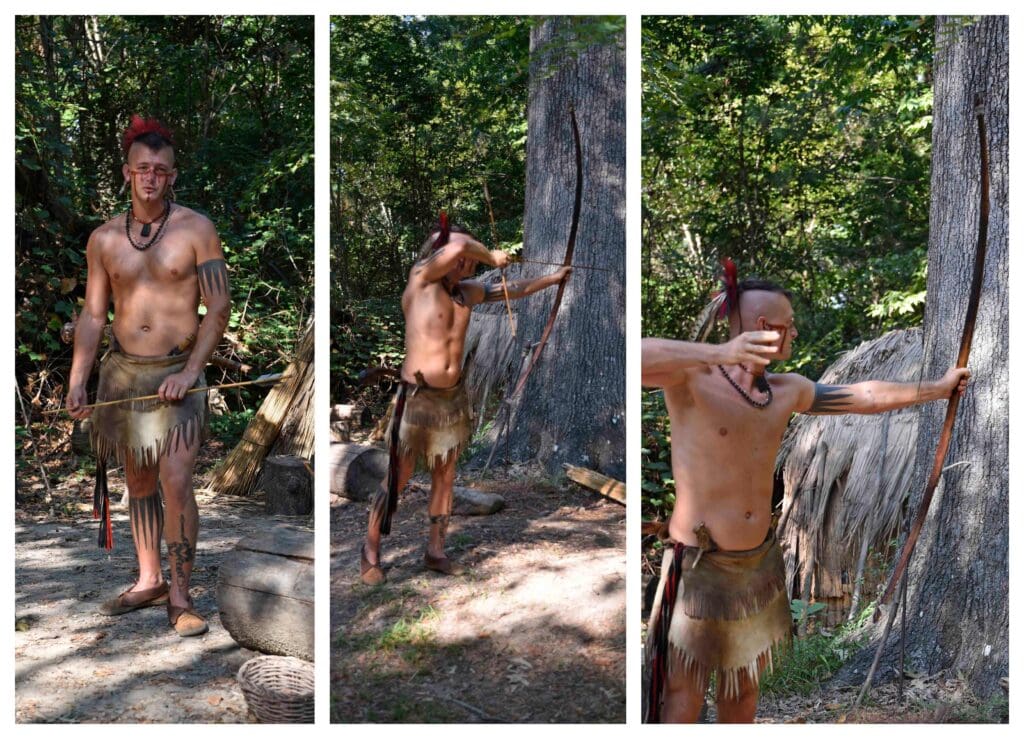
Traditional Skills
Growing crops helped accent the foods gathered by hunting and fishing. Before leaving the village, we observed an interpreter fashioning arrows for hunting. During our discussion with him, we learned that some of the interpreters are actual descendants of the Powhatan people. When he had finished creating his arrow, he showed us his proficiency with a bow.
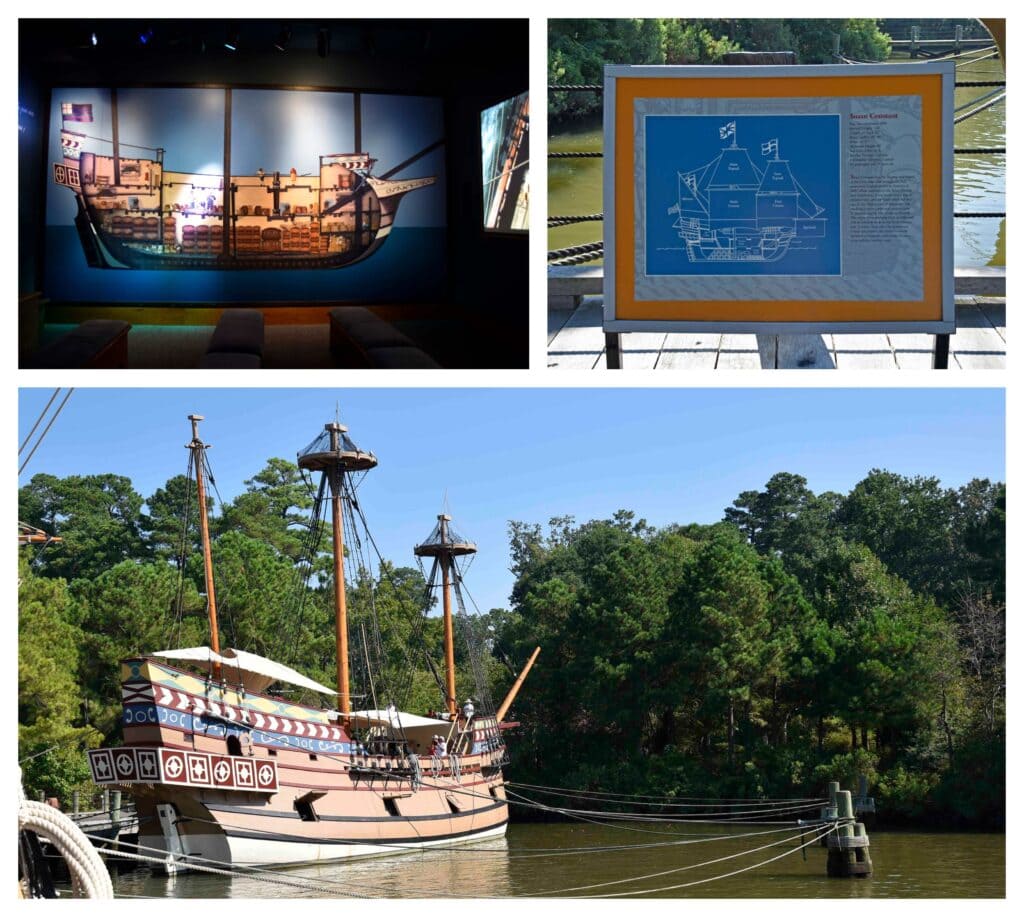
Cramped Quarters
Continuing down the path, we came to a pier where three ships were moored. These are replicas of the ones used to bring the Jamestown Settlement members to the New World. Visitors are invited to explore all three ships, but we decided to just check out the Susan Constant. A total of 71 men were aboard this vessel, so we tried to imagine life at sea.
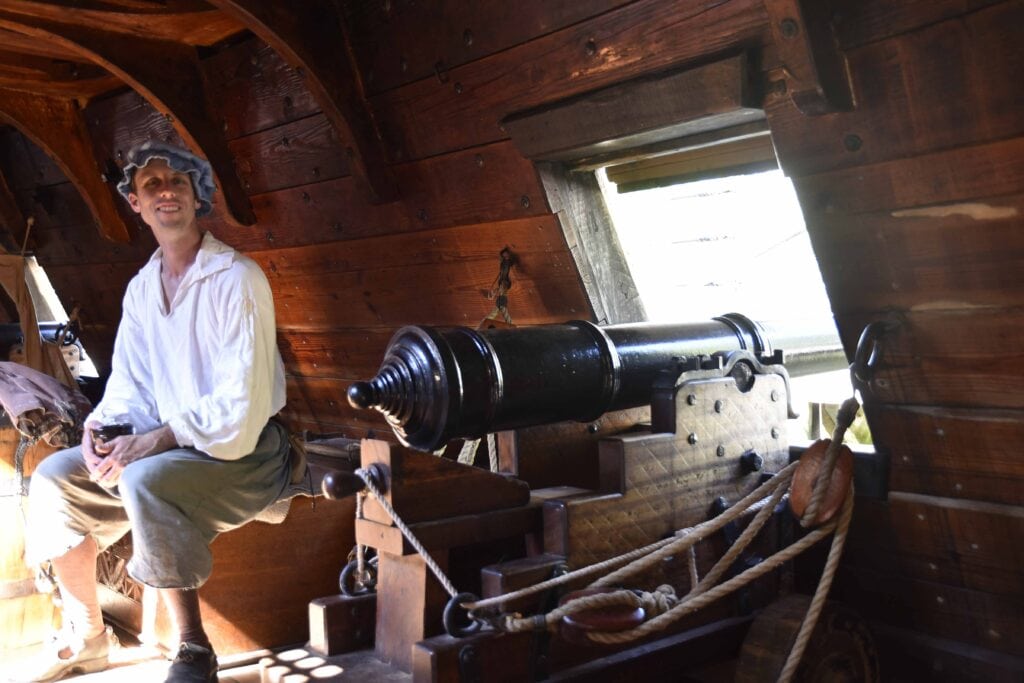
Watch Your Head
Descending the steep steps, we found ourselves in the ‘tween deck. The six-foot ceiling made the space feel even tighter than what we expected. An interpreter detailed the tedious life to which those aboard were subjected. He walked us through how Captain Christopher Newport navigated the ship. We muddled around below deck and even took time to pose for a fun selfie, which you’ll find at the bottom of this article.
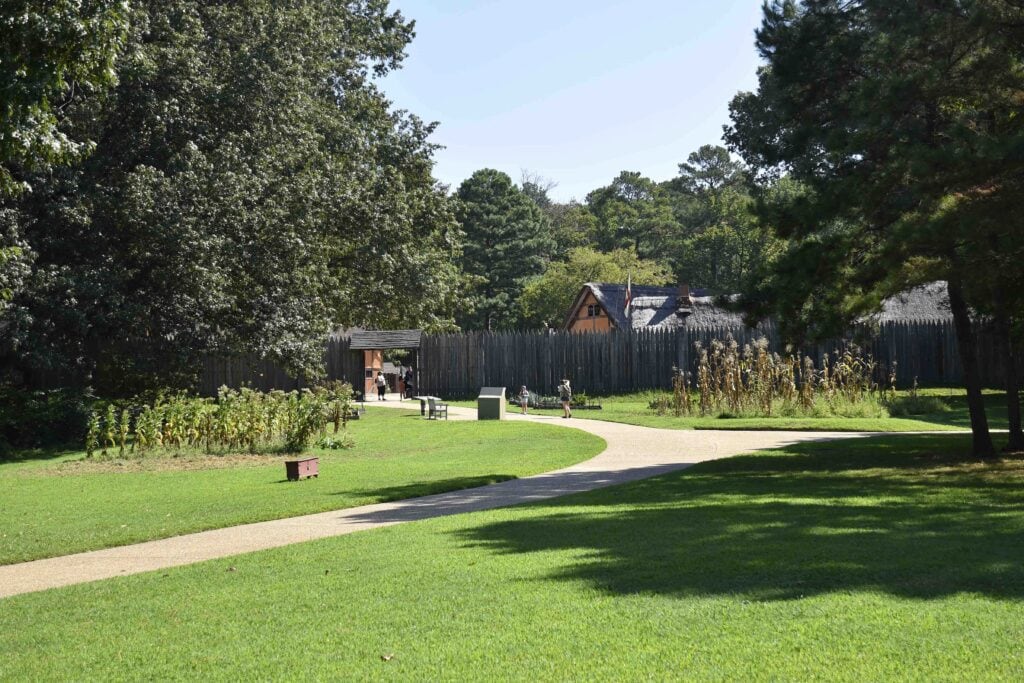
Heading to James Fort
The path took a sharp bend and started heading back toward the museum. This signaled our approach to James Fort. This is a recreation of the military outpost that was in this area from 1610 to 1614. As we approached, the thatched roofs could be seen rising above the wooden pickets that protected the settlement. We passed a small stand of corn, before heading through the gate.
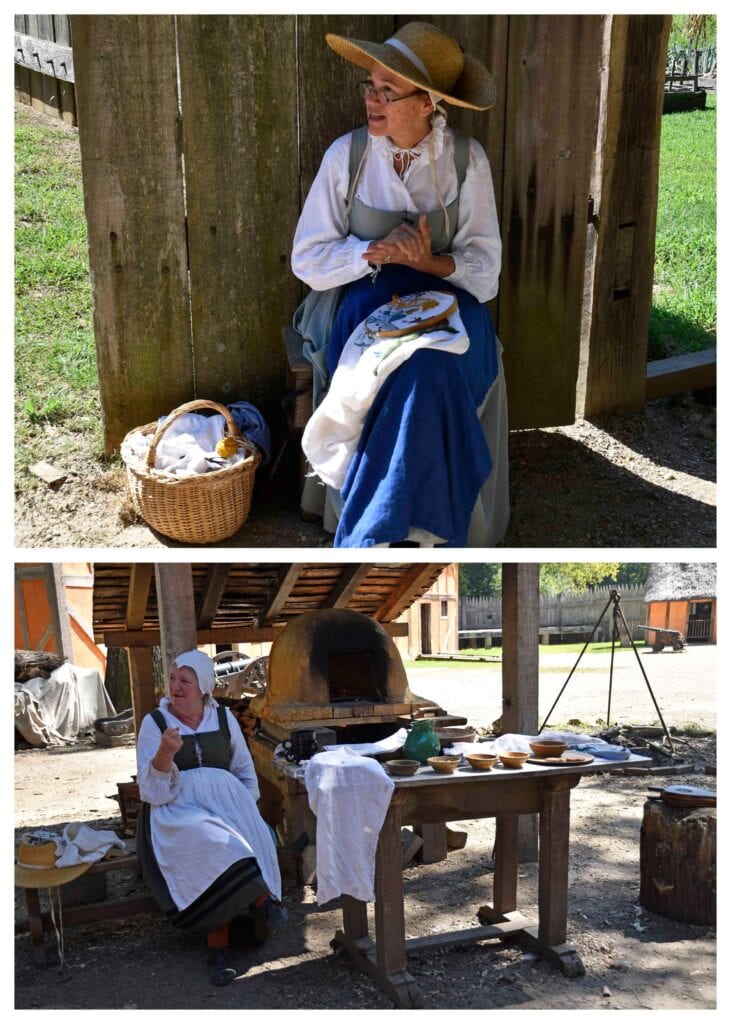
Interpreter Interactions
We were greeted by an interpreter busy with embroidery. She explained the layout of the fort and invited us to explore to our hearts’ content. Nearby another interpreter was teaching visitors about meal preparation. At the Jamestown Settlement, they grow heirloom crops each year. These include a variety of vegetables and herbs. Foods are prepared in the same fashion as they would have been in the early 1600s.
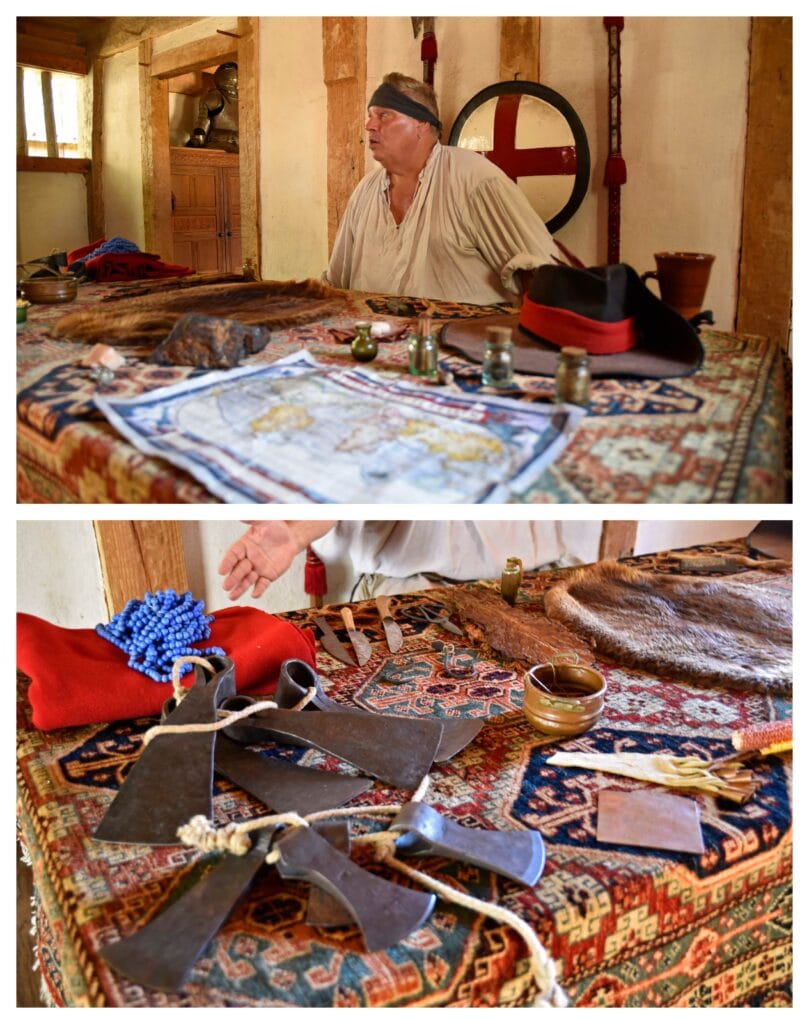
Tools of Trade
The land that was chosen for the settlement was situated amid about 14,000 Powhatans. While trading was quickly established, the relationship with the natives remained tenuous. Unfamiliar with the climate, the settlers struggled. This new population was comprised of many English noblemen, who found themselves unaccustomed to daily chores. To add to their woes, prolonged drought led to an increase in disease and deaths.
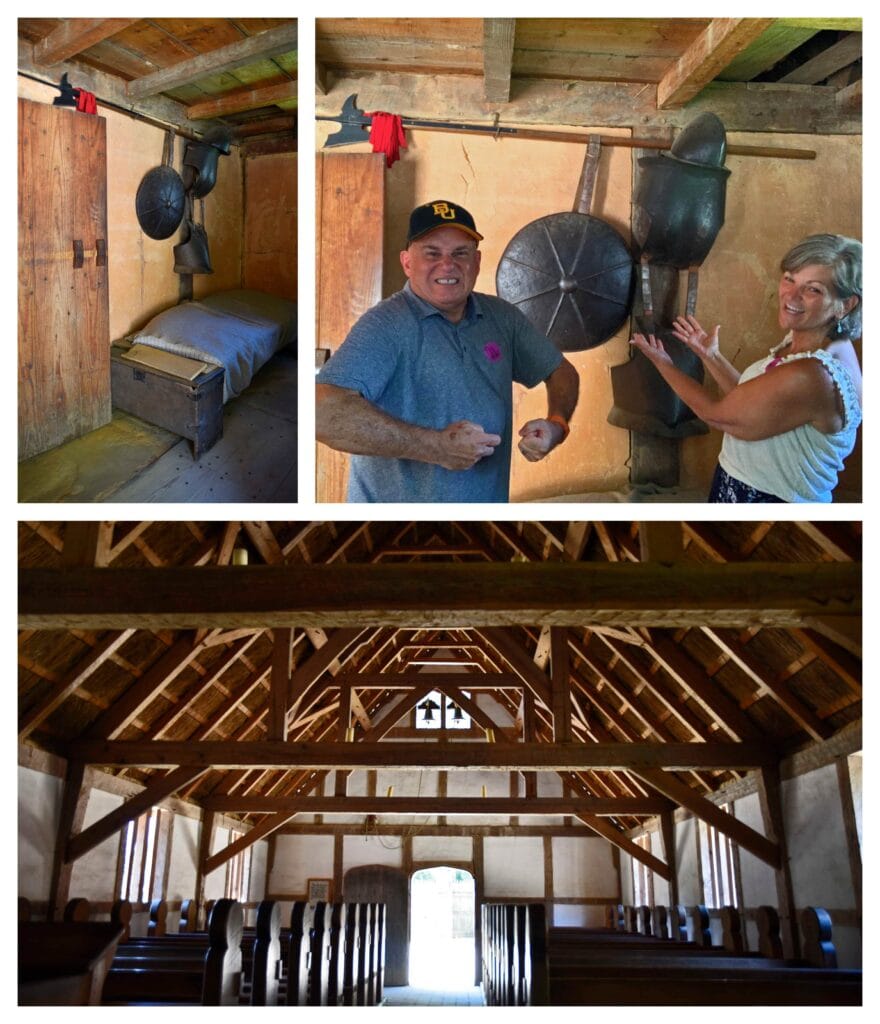
Exploring the Village
We explored the various structures that makeup James Fort. Seeing all of this armor made me realize that these early settlers must have been in great shape. I couldn’t imagine going around decked out in all of this, especially during the hot, humid summers. We started toward the forge when the blacksmith informed us that he was preparing to demonstrate an early rifle.
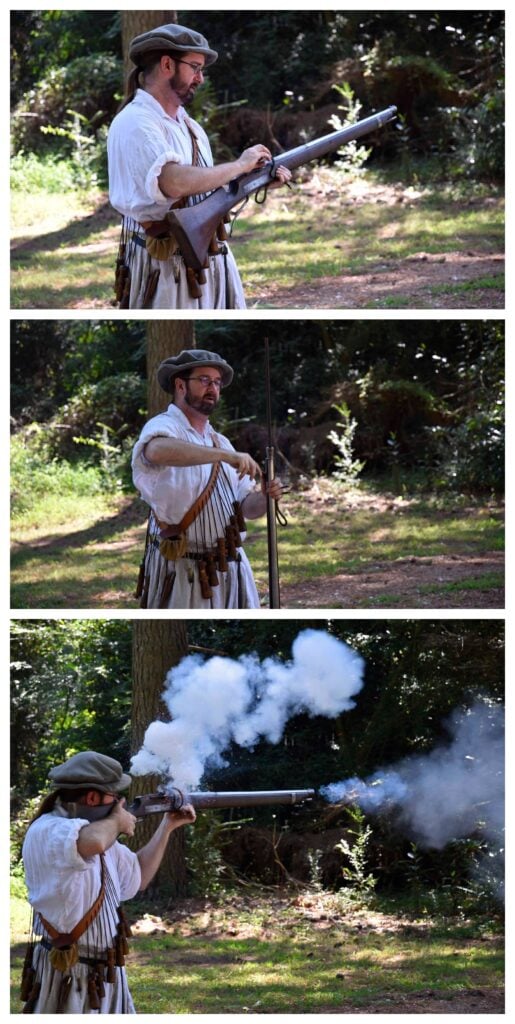
Hunting Old Style
We followed him to a small opening just outside of the fort walls. He carried with him an arquebus, which was a musket-like firearm. It was loaded through the muzzle, as he explained each step of the process. A smoldering wick was used to ignite the gunpowder in the pan. Two puffs of smoke and a loud report signaled a successful firing. He repeated the process to make sure everyone had a chance to see it.
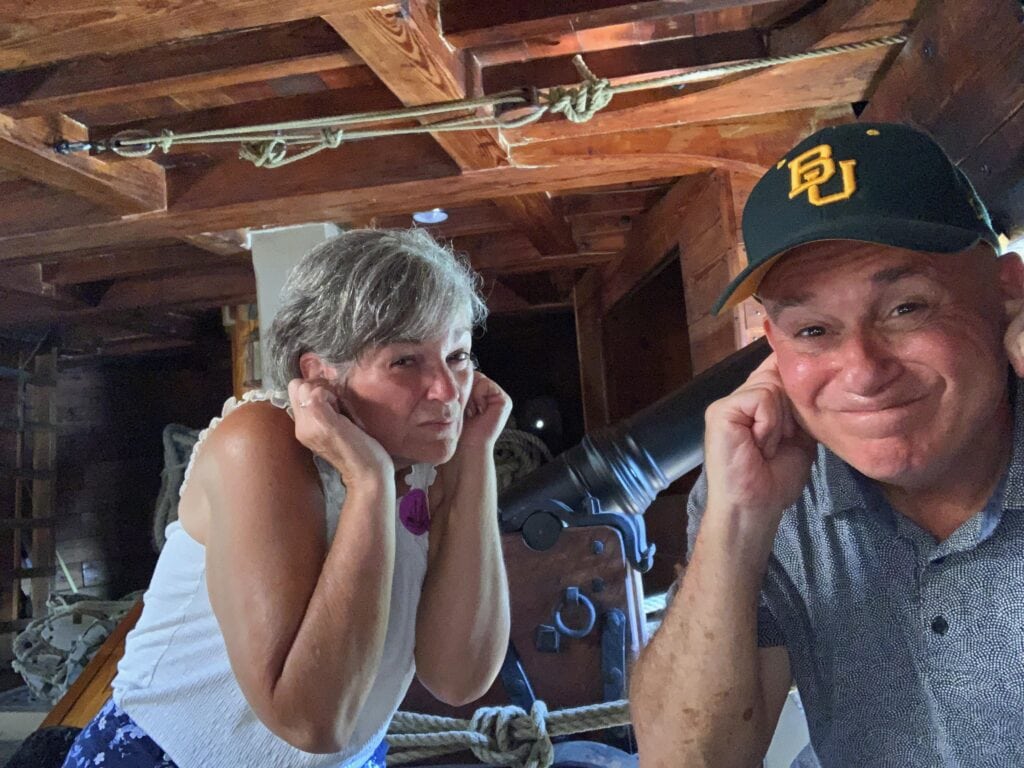
Plan Your Jamestown Settlement Visit
The tickets we purchased for the Jamestown Settlement were $30 per person. These were good for 7 consecutive days. They also included admission to the American Revolution Museum at Yorktown. Since this was also on our itinerary, it made sense to get the dual pass. We spent around 2 1/2 hours at this stop, but we skimmed through the museum portion. Someone wanting to truly immerse themselves in history should allow for at least a 4-hour stay. No matter how much time you have to spend, we feel like this attraction is a good value. Besides, you get to walk on the grounds where the first permanent English settlement was created.


